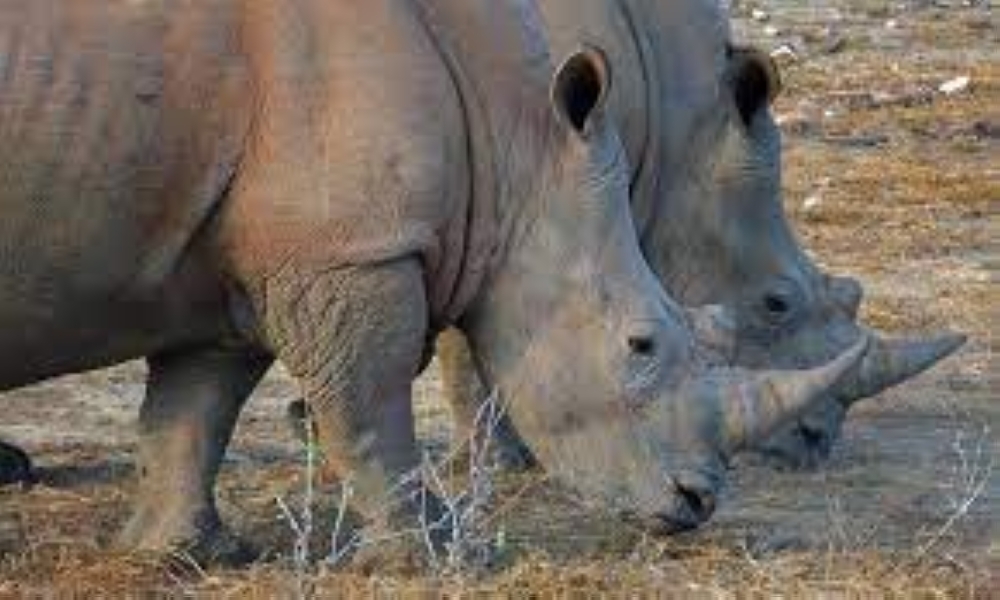Cites considers Namibia’s white rhino classification
The secretariat of the Convention on International Trade in Endangered Species (Cites) says Namibia’s white rhino population does not meet the biological criteria for inclusion in Appendix I.
The provisional analysis comes after Namibia recently proposed that it wanted to downlist its white rhino population in an effort to facilitate trade in live animals for in-situ conservation and trophy hunting.
This is but one of the proposals that will be heard at this year’s World Wildlife Conference, where stricter trade regulations for nearly 600 animal and plant species – believed to be under threat of extinction from international trade – will be considered.
The proposals have been put forward by the parties to Cites, and will be reviewed at the meeting of the Conference of Parties (COP-19) taking place in Panama from 14 to 25 November.
In essence, the Namibian government wants to downgrade the white rhino population from Cites Appendix I to Appendix II.
Appendix I contains a list of species threatened by extinction, while Appendix II is a list of species with looser protections.
Worked for Eswatini
In its provisional conclusion, the secretariat said the Namibian white rhino population numbered 1 237 in 2021.
It noted that while this is quite a small population, it has already agreed to transfer the much smaller population of this species in Eswatini from Appendix I to Appendix II, and there do not seem to be indications of any aggravating factors.
“Namibia reports exporting only three to four live specimens annually for non-commercial purposes in recent years, but they express a hope to increase this if their proposal is adopted.
“For hunting trophies, according to the Cites trade database, the annual number of trophies of this species exported by Namibia annually is in single figures, but Namibia hopes to increase this if the proposal is adopted. The species seems highly managed in Namibia and measures to enforce the proposed annotation limitations appear satisfactory.”
Biological criteria
It added that illegal killing is said to be less than 1% of the population per annum and shows no upward trend.
"The secretariat considers that Namibia’s white rhino population does not appear to meet the biological criteria for inclusion in Appendix I.
“The precautionary measures proposed in the form of an annotation seem satisfactory and proportionate to the anticipated risks to the species, and effective enforcement controls appear to be in place."
Not Final
The Cites secretariat said that the provisional assessments are being communicated to the parties to help them make their own assessment of the proposals, to stimulate discussion and to encourage further clarification from proponents where appropriate.
The secretariat will update its assessments considering comments received from parties and intergovernmental bodies.
It will also take account of additional information from other sources and provide its final recommendations in due course.
Of the 48 rhinos poached this year, a total of 32 were black rhinos and 16 were white rhinos.
The provisional analysis comes after Namibia recently proposed that it wanted to downlist its white rhino population in an effort to facilitate trade in live animals for in-situ conservation and trophy hunting.
This is but one of the proposals that will be heard at this year’s World Wildlife Conference, where stricter trade regulations for nearly 600 animal and plant species – believed to be under threat of extinction from international trade – will be considered.
The proposals have been put forward by the parties to Cites, and will be reviewed at the meeting of the Conference of Parties (COP-19) taking place in Panama from 14 to 25 November.
In essence, the Namibian government wants to downgrade the white rhino population from Cites Appendix I to Appendix II.
Appendix I contains a list of species threatened by extinction, while Appendix II is a list of species with looser protections.
Worked for Eswatini
In its provisional conclusion, the secretariat said the Namibian white rhino population numbered 1 237 in 2021.
It noted that while this is quite a small population, it has already agreed to transfer the much smaller population of this species in Eswatini from Appendix I to Appendix II, and there do not seem to be indications of any aggravating factors.
“Namibia reports exporting only three to four live specimens annually for non-commercial purposes in recent years, but they express a hope to increase this if their proposal is adopted.
“For hunting trophies, according to the Cites trade database, the annual number of trophies of this species exported by Namibia annually is in single figures, but Namibia hopes to increase this if the proposal is adopted. The species seems highly managed in Namibia and measures to enforce the proposed annotation limitations appear satisfactory.”
Biological criteria
It added that illegal killing is said to be less than 1% of the population per annum and shows no upward trend.
"The secretariat considers that Namibia’s white rhino population does not appear to meet the biological criteria for inclusion in Appendix I.
“The precautionary measures proposed in the form of an annotation seem satisfactory and proportionate to the anticipated risks to the species, and effective enforcement controls appear to be in place."
Not Final
The Cites secretariat said that the provisional assessments are being communicated to the parties to help them make their own assessment of the proposals, to stimulate discussion and to encourage further clarification from proponents where appropriate.
The secretariat will update its assessments considering comments received from parties and intergovernmental bodies.
It will also take account of additional information from other sources and provide its final recommendations in due course.
Of the 48 rhinos poached this year, a total of 32 were black rhinos and 16 were white rhinos.




Comments
Namibian Sun
No comments have been left on this article